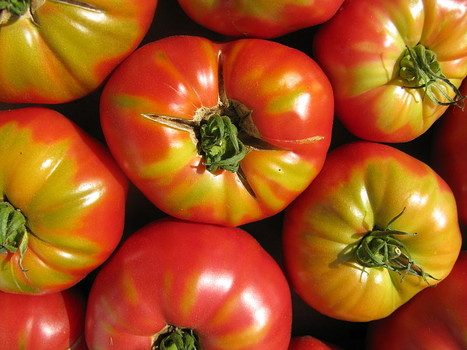Processing tomatoes in large quantities produces a huge amount of waste that at present is destined for landfills or becomes a water contaminant. Namita Shrestha with the South Dakota School of Mines and Technology and colleagues from Princeton University and Florida Gulf Coast University are the first to develop a workable means of turning tomato waste into electricity. The development was presented at the March 16, 2016, session of the annual meeting of the American Chemical Society.
The scientists developed a microbial electrochemical cell specific to tomato waste. The cell takes advantage of the natural lycopene pigment in tomatoes that serves as a source of electrons that are easily transferred using bacteria in a microbial electrochemical cell. The system actually functions at a higher level of electrical production with waste tomatoes taken directly from farming operations without any cleaning.
The cell at present can produce 0.3 watts of electricity from 10 milligrams of tomato waste. The volume of tomato waste produced in Florida alone is 396,000 tons per year. No treatment process specific to tomato waste exists at present. The researchers expect that scale up of their method could power Disney World for 90 days with the current supply of tomato waste produced in Florida.
The use of tomato waste in this new process would reduce the production of methane from rotting tomatoes. Tomato growers would probably be willing to absorb the cost of delivering the tomato waste to a centralized location for electrical production because the growers already pay to take the waste to landfills. The idea is better living through chemistry.















